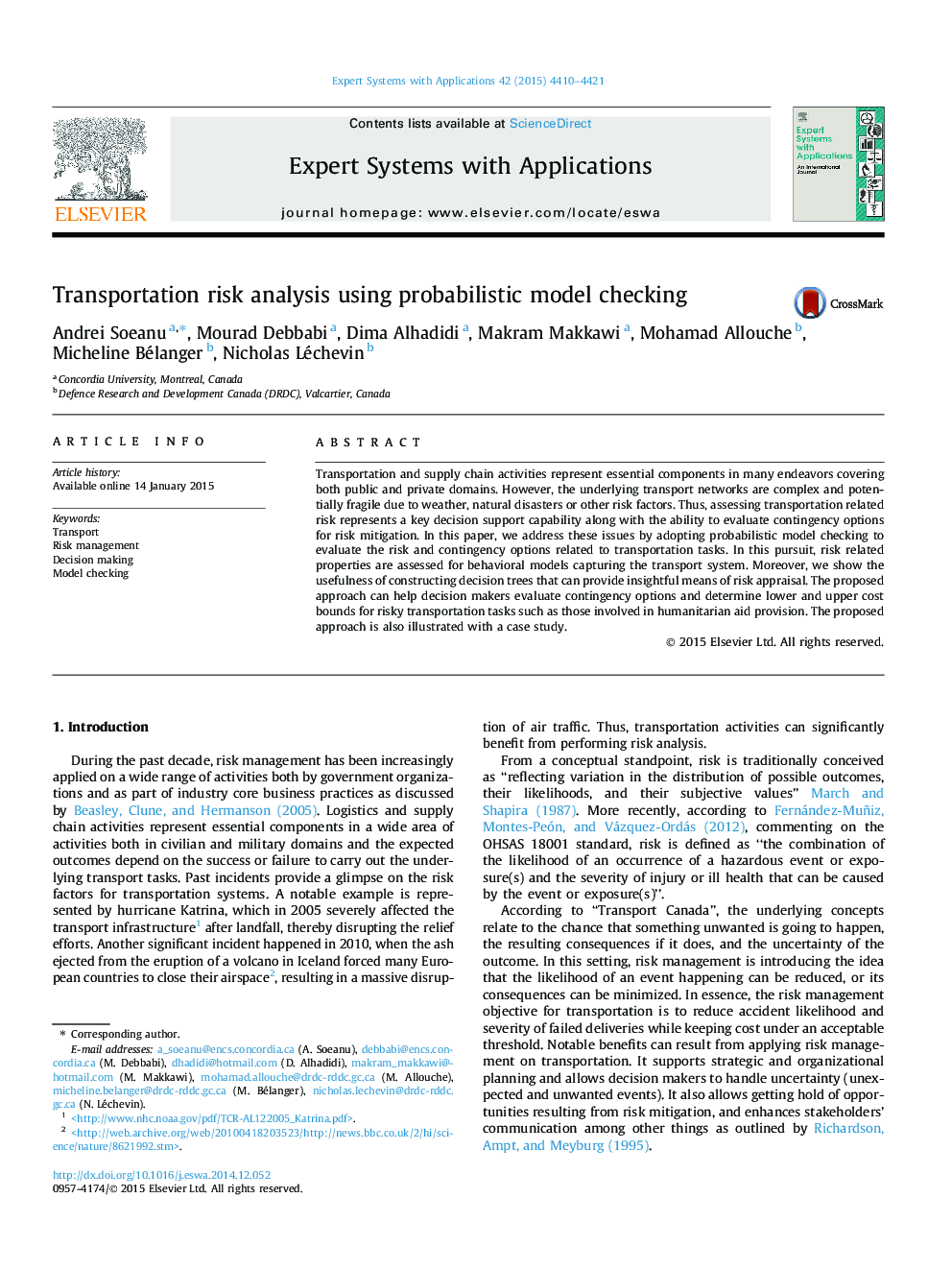| کد مقاله | کد نشریه | سال انتشار | مقاله انگلیسی | نسخه تمام متن |
|---|---|---|---|---|
| 385466 | 660866 | 2015 | 12 صفحه PDF | دانلود رایگان |
کلمات کلیدی
1.مقدمه
2. کارهای مرتبط
3. پیشینه تحقیق
1.3.درختهای تصمیمگیری
شکل 1. مثال درخت تصمیمگیری
2.3.PRISM
4. تشریح سیستم حملونقل
1.4.فروض
جدول 1. احتمالات مرتبط با ریسک مسیریابی
شکل 2. موردکاوی
2.4. روش تحقیق
3.4. واحدهای ثابت و پویا
5. پشتیبان تصمیمگیری براساس درختهای تصمیمگیری
جدول 2. مطلوبیت احتمال
شکل 3. تکنیک ارزیابی ریسک
شکل 4. درخت تصمیمگیری با EMC
شکل 5. درخت تصمیمگیری با آستانه هزینهای
6.خصوصیات دارائیها
شکل 6. محیط بررسیکننده مدل PRISM
شکل 7. محیط بررسیکننده مدل PRISM-- تأییددارائی
شکل 8. محیط بررسیکننده مدل PRISM- تأیید دارائیها
شکل 9. محیط بررسیکننده مدل PRISM- تأیید دارائیهای تغییریافته
7.نتیجهگیری و کارهای آتی
ضمیمه الف
• Elaboration of an approach for transportation risk assessment and contingency evaluation.
• Modeling risk prone transportation tasks as composed Markov Decision Process (MDP).
• Assessment of transportation tasks expressed as MDP via probabilistic model checking.
• Provision of decision making support via decision trees built from the model checking output.
• Evaluation of risk related properties expressed in probabilistic temporal logic.
Transportation and supply chain activities represent essential components in many endeavors covering both public and private domains. However, the underlying transport networks are complex and potentially fragile due to weather, natural disasters or other risk factors. Thus, assessing transportation related risk represents a key decision support capability along with the ability to evaluate contingency options for risk mitigation. In this paper, we address these issues by adopting probabilistic model checking to evaluate the risk and contingency options related to transportation tasks. In this pursuit, risk related properties are assessed for behavioral models capturing the transport system. Moreover, we show the usefulness of constructing decision trees that can provide insightful means of risk appraisal. The proposed approach can help decision makers evaluate contingency options and determine lower and upper cost bounds for risky transportation tasks such as those involved in humanitarian aid provision. The proposed approach is also illustrated with a case study.
Journal: Expert Systems with Applications - Volume 42, Issue 9, 1 June 2015, Pages 4410–4421
